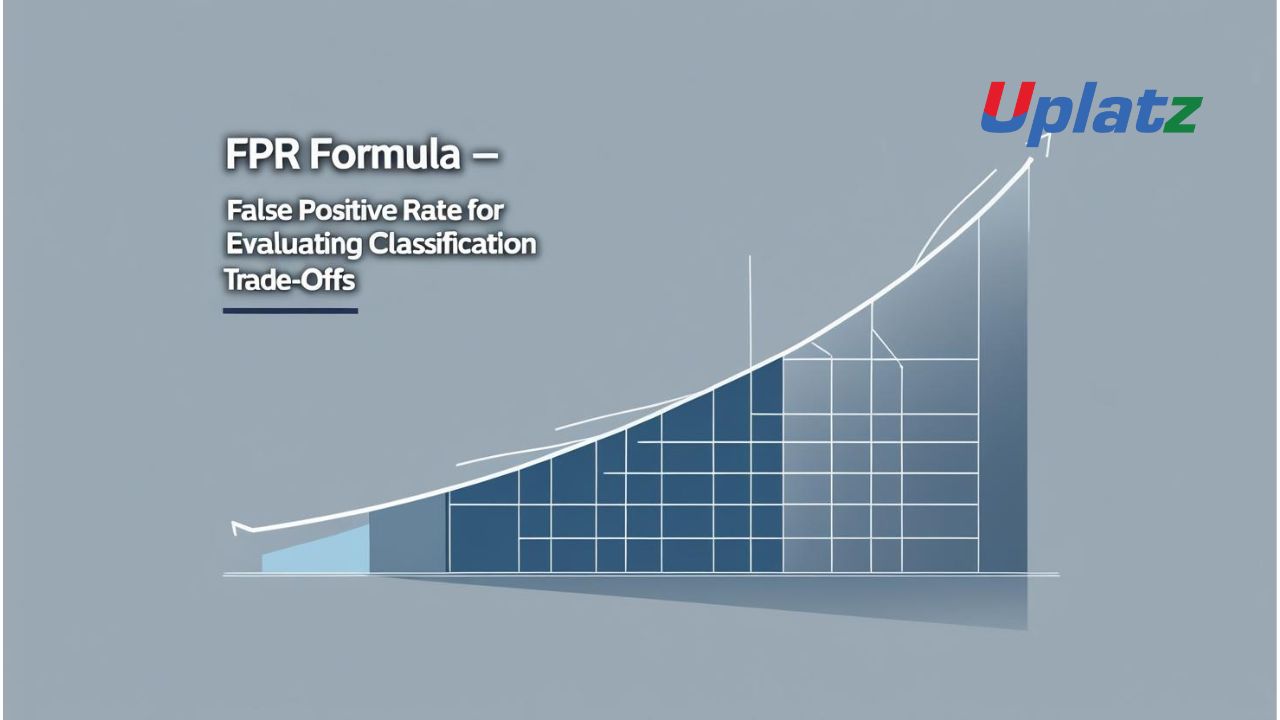 🔹 Short Description:
🔹 Short Description:
False Positive Rate (FPR) shows how often a model incorrectly flags a negative case as positive. It’s crucial for balancing model accuracy and reliability.
🔹 Description (Plain Text):
The False Positive Rate (FPR) is a fundamental metric in classification that indicates how frequently a model wrongly labels negatives as positives. It answers: “Out of all the actual negatives, how many did the model mistakenly call positive?”
Formula:
FPR = FP / (FP + TN)
Where:
- FP (False Positives) – Negative instances incorrectly predicted as positive
- TN (True Negatives) – Correctly predicted negatives
The FPR is especially important when the cost of false alarms is high, such as in spam detection, security, or loan approvals.
Example:
Let’s say a credit card fraud detection system reviews 1,000 transactions:
- 900 are legitimate (negative cases)
- The model wrongly flags 90 of them as fraudulent (FP = 90)
- Correctly clears 810 (TN = 810)
Then:
FPR = 90 / (90 + 810) = 0.10 or 10%
Why FPR Matters:
In many real-world applications, false positives cause frustration, waste, or harm. A high FPR means your model might be crying wolf too often—flagging safe content, denying loans to good customers, or blocking non-malicious users.
It’s commonly paired with True Positive Rate (TPR) in ROC curves to assess trade-offs between catching positives and avoiding false alarms.
Real-World Applications:
- Spam filters: Preventing important emails from going to spam
- Security systems: Avoiding excessive false alarms
- Healthcare diagnostics: Preventing unnecessary anxiety or tests in healthy individuals
- Loan approvals: Ensuring reliable applicants are not rejected
- Job applicant filtering: Avoiding unfair rejections in automated screening
Key Insights:
- FPR focuses on negative class errors
- It is the complement of specificity (FPR = 1 – Specificity)
- Central to ROC analysis where trade-offs between TPR and FPR are visualized
- A low FPR is critical in sensitive and user-facing systems
- Should be balanced with precision and recall for holistic model evaluation
Limitations:
- Doesn’t show how many actual positives were caught (that’s TPR’s job)
- Can be misleading in imbalanced datasets without context
- Models optimized to reduce FPR might miss many actual positives
- Should always be evaluated with use-case-specific cost implications in mind
FPR is a reminder that not all mistakes are equal—and false positives, though often overlooked, can severely damage user trust and system credibility.
🔹 Meta Title:
FPR Formula – Control False Alarms in Classification Models
🔹 Meta Description:
Explore the False Positive Rate (FPR) formula to assess how often your model wrongly flags negatives as positives. Learn its role in minimizing false alarms in spam filters, fraud detection, and risk assessments.
